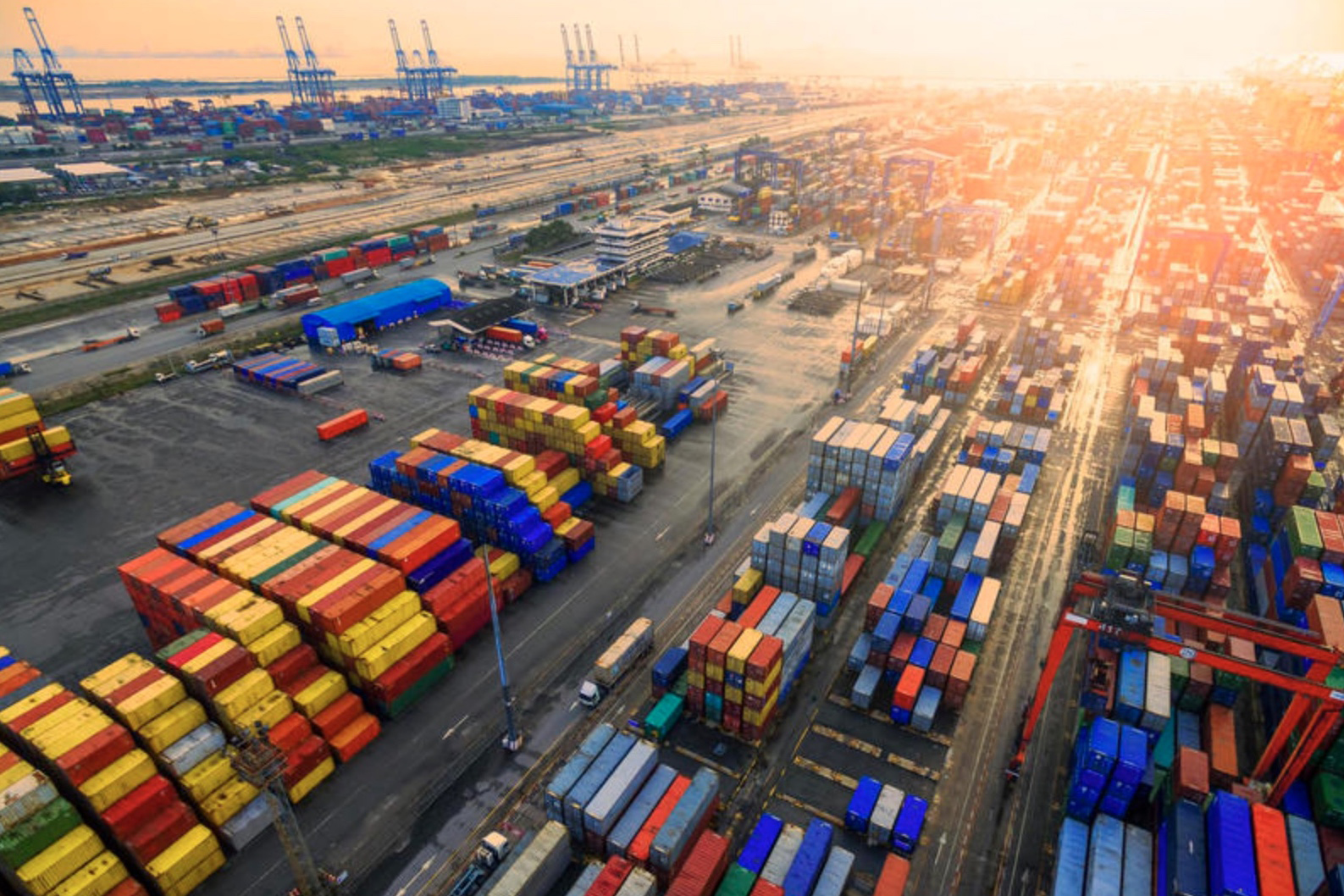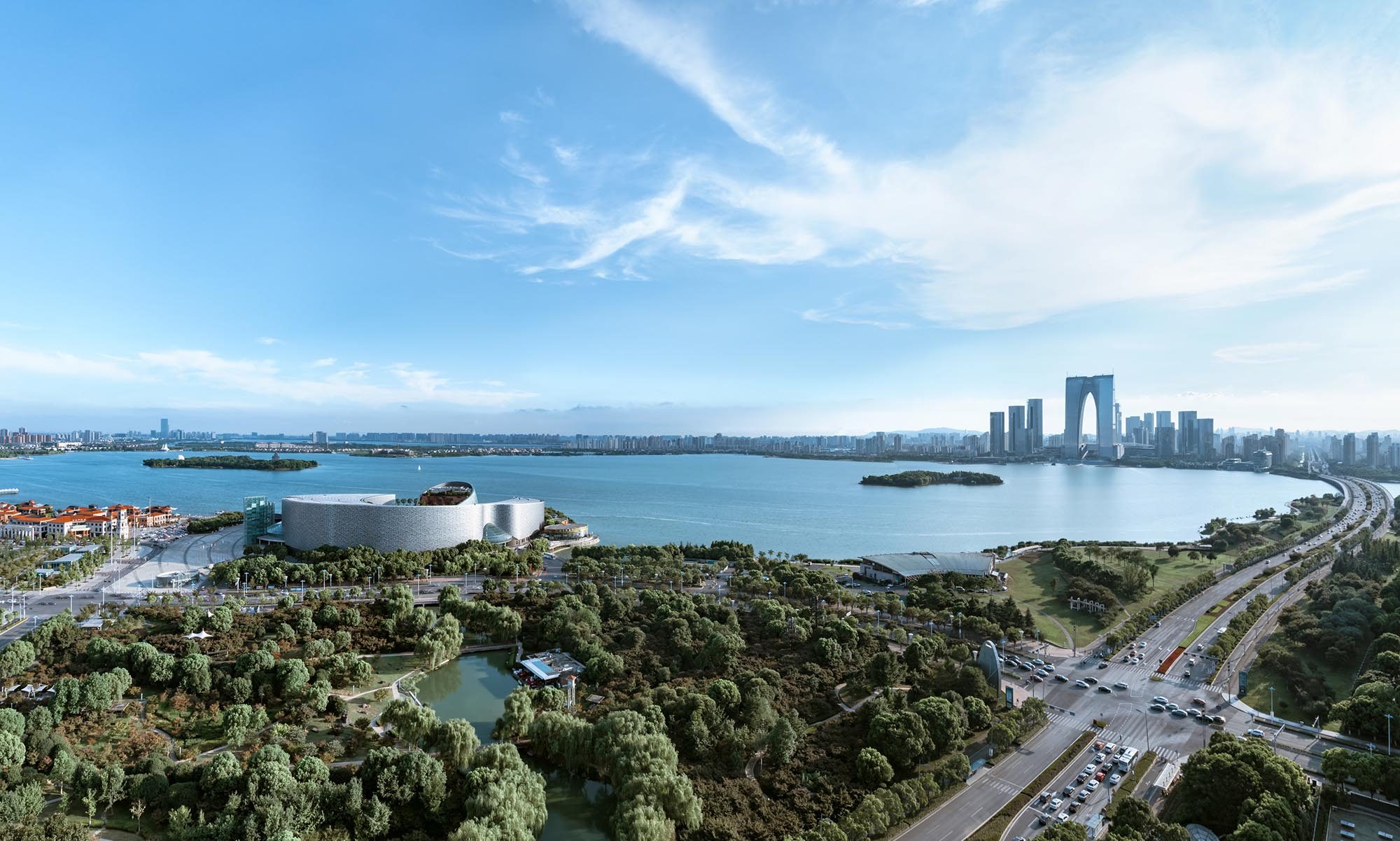Cloud River Urban Research Institute

Editor’s note:
Where is the world’s most active container ports? Which city has the world’s largest container throughput? Which city in China has the most convenient container port? Why the global container transport is highly concentrated in China’s Yangtze River Delta region and the Pearl River Delta region? Cloud River Urban Research Institute, using the “container port convenience” in its China Integrated City Index (CICI), gives answer to these questions using both graphic and textual interpretations.

China has the world’s busiest container ports
The COVID-19 pandemic has brought a long-lasting turmoil to the global supply chain and maritime transport. In 2020, the global container throughput dropped by 1.2% year-on-year. Thanks to the dynamic zero-COVID policy, China bucked the trend and quickly resumed socioeconomic activities with its container throughput increasing by 1.2% year-on-year in 2020.
As Figure 1 suggests, China’s mainland ranks first with an overwhelming advantage compared with other countries and regions in terms of its overall container throughput in 2020. The second to the 10th in the ranking are the United States, Singapore, the Republic of Korea (ROK), Malaysia, Japan, the United Arab Emirates (UAE), Turkey, Germany, and Hong Kong.
Figure 1 Top 30 countries and regions
in terms of container throughput in 2020

As Figure 2 shows, the top 10 countries and regions in terms of container throughput in 2020 took 59.8% of the world’s total, while the top 30 took up to 86.5% of the overall share. That is to say, these 30 countries and regions, which have the most active supply chains, accounted for nearly 90% of the global container throughput in the year 2020.
It is worth mentioning that China’s mainland took an overwhelming 30.1% of the global container throughput in 2020. If we combine the amount of the Chinese mainland with that of Hong Kong, the overall figure even exceeds the other 10 among the top 12 have combined. According to Professor Zhou Muzhi, president of Cloud River Urban Research Institute, “container transport is the logistical foundation of the global supply chain and the container throughput measures the activeness of the global supply chain. China’s overwhelming advantage in the ranking of global container throughput truly reflects its core status in the global supply chain.”
Figure 2 The concentration of global container throughput in 2020


Which city has the largest container throughput?
As Figure 3 shows, the world’s top 10 cities in terms of container throughput are Shanghai, Singapore, Ningbo-Zhoushan, Shenzhen, Guangzhou, Qingdao, Busan, Tianjin, Hong Kong and Rotterdam. The fact that China took seven of the top 10 demonstrates the country’s overwhelming position in container transportation.
Among the top 30 cities in the ranking, China took 12 (including Hong Kong and Kaohsiung) and Asia took 21. Professor Zhou said, “The ranking signals a new era for Asia has arrived.”
Besides Beijing, only U.S. had more than one city in the top 30 – Los Angeles took the 17th spot, Long Island 19th, and New York-Jersey 20th. Japan, the world’s third largest economy, had only one spot in the ranking, with the Keihin region coming in at 21st.
Figure 3 Top 30: The businesses container ports in the world in 2020

Which is the Chinese city with most convenient port?
Amid accelerated globalization, port is key to the operation of supply chains and vital to a country and a city. The Index uses “container port convenience” to analyze and evaluate 297 cities at prefecture-level and above across China.
Container port convenience is an index based on data such as the straight-line distance from the city center to the port and the port container throughput. As shown in Figure 4, Shanghai, Shenzhen, Ningbo, Qingdao, Tianjin, Guangzhou, Xiamen, Rizhao, Suzhou and Dalian were the top 10 Chinese cities in terms of urban container port convenience in 2020. Among them, Shanghai made the strongest showing.
Among the top 30 cities, Dalian is the only city whose container throughput declined in 2020. Despite the fallout of COVID-19, most port cities in China managed to achieve container throughput growth, which shows the strong export prowess of the manufacturing industry.
Figure 4 Top 30 cities in terms of container port convenience

Container shipping concentrates in certain port cities
As Figure 5 indicates, in 2020, the top five cities in terms of container port convenience accounted for 52.1% of the country’s total container output at ports, the top 10 accounted for 71.4%, and the top 30 accounted for a staggering 89%. These portions demonstrate China’s container shipping mostly concentrates in some certain port cities.
Figure 5 Concentration rate of Chinese cities’ port container throughput

Figure 6 is a GIS-based map of port container convenience, visualizing the top 10 Chines cities. The color, length, and width indicate degrees of their port container convenience.
Professor Zhou pointed out that the visualized map shows how China’s port container shipping or the global port container shipping is concentrated in the Yangtze River Delta and the Pearl River Delta, which can be explained by the fact that the regions are home to the largest industrial clusters for global supply chains.
Figure 6 Visualizing top 10 Chinese cities
by port container conveniences in 2020

The article was first published on China SCIO, China.org.cn on Jul. 22, 2022 and reprinted by other news websites.
